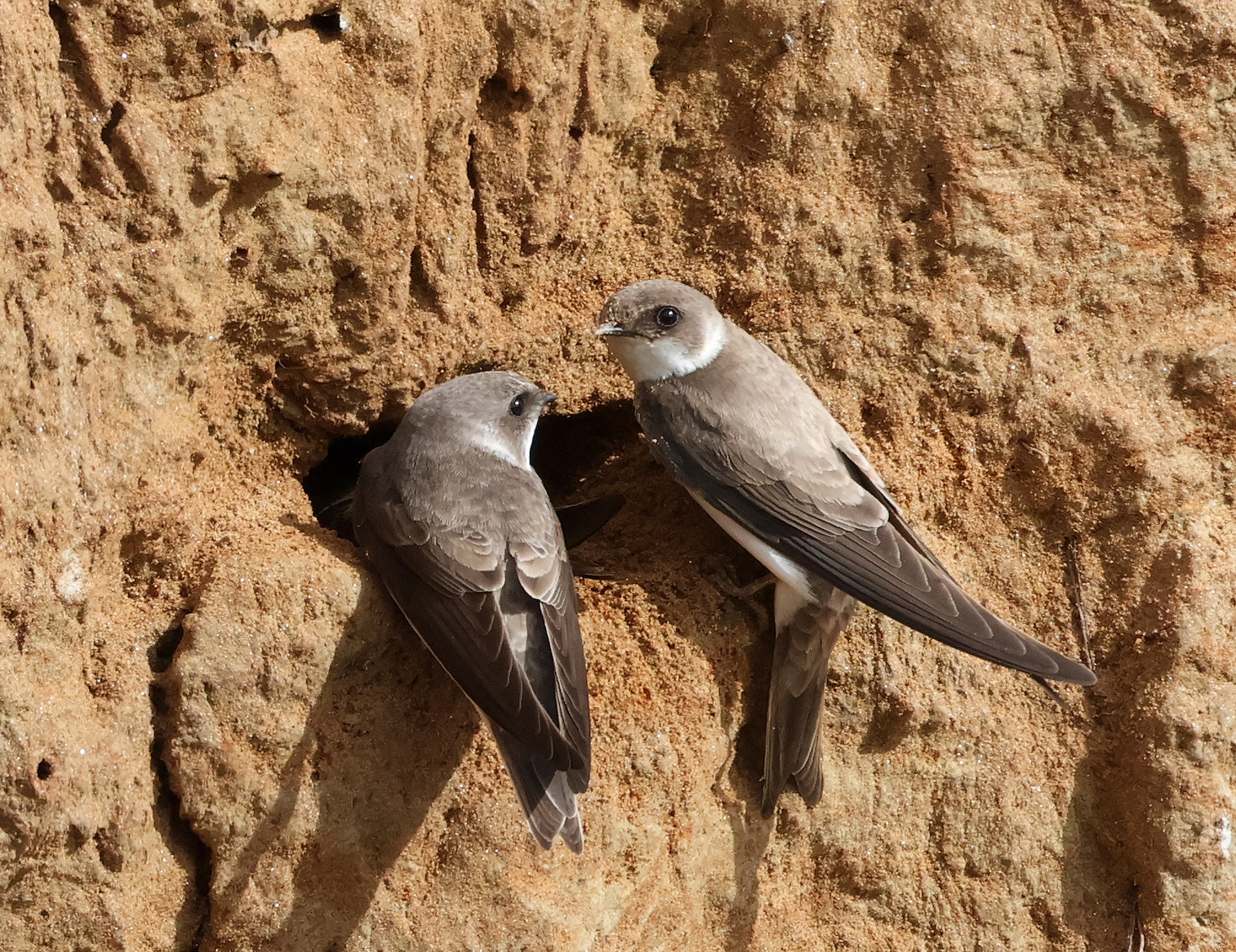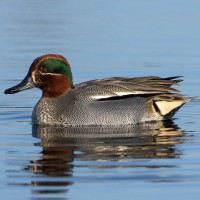Description
The Jammerdaalse Heide is an old sand and clay extraction pit (active until 1930's) that was turned into a nature reserve. The area consists of several deep waterholes, steep sand walls and surrounding forests (mainly deciduous). The water is low in nutrients, so little vegetation and fishes are present. This results in low numbers of waterfowl. Sometimes a pair of Common Teal can be present. Little Grebe and Great Crested Grebe can be seen on both larger water bodies. On multiple locations, dead trees and branches hang over the water. Here, Common Kingfisher and Grey Wagtail can often be found. Sometimes a Common Sandpiper is present too.
Surrounding the water bodies, broad patches of reedbed are present. These parts are used by common reedbirds, like Reed Warbler and Reed Bunting. Sometimes Water Rail can be heard.
The steep sand walls were once a perfect location for a breeding colony of Sand Martin and numbers could reach over 60 nests, but due to erosion and human interference, the colony isn't there anymore. In early spring you can still find small numbers searching for suitable nesting grounds, but in recent years no breeding pairs have been established.
There are small patches of heathland present in mainly the northern part of the area. Species like European Stonechat breeds here. In the surrounding trees and bushes, Tree Pipit and Wood Lark can be found. Most of these patches of heathland are very old burial mounts from the early Iron Age. They are clearly visible in the landscape and are mostly covered by heathland and shrubs.
The surrounding forests, which mainly consists of deciduous forest are home to a large variety of common songbird, like Willow Warbler, Common Redstart and Garden Warbler. Scarcer species, like Pied Flycatcher and Wood Warbler can be present too. Woodpeckers can be seen and heard in larger numbers and all five species are present: Great Spotted Woodpecker, Middle Spotted Woodpecker, Lesser Spotted Woodpecker, Eurasian Green Woodpecker and Black Woodpecker. Above the forest, predatory birds can be spotted, like European Honey-buzzard and Sparrowhawk and sometimes even a Osprey can be seen. In winter, large flocks of finches and tits are present.
In the southern side of the area, agricultural fields are present. Sometimes, small numbers of Grey Partridge can be present. In winter, small flocks of Stock Dove can be seen.
_________________________
Nederlands: De Jammerdaalse Heide is een oude zand- en kleiwinningsput (actief tot 1930) die werd omgevormd tot natuurgebied. Het gebied bestaat uit verschillende diepe waterpoelen, steile zandoevers en omliggende bossen (voornamelijk loofbomen). Het water is arm aan voedingsstoffen, waardoor er weinig vegetatie en vissen aanwezig zijn. Dit resulteert in een laag aantal watervogels. Soms kan er een paar Common Teal aanwezig zijn. Little Grebe en Great Crested Grebe zijn te zien op beide grotere wateren. Op meerdere locaties hangen dode bomen en takken over het water. Hier zijn vaak Common Kingfisher en Grey Wagtail te vinden. Soms is er ook een Common Sandpiper aanwezig.
Rondom de waterplassen zijn brede stukken rietveld aanwezig. Deze delen worden gebruikt door rietvogels, zoals Reed Warbler en Reed Bunting. Soms is Water Rail te horen.
De steile zandoevers waren ooit een perfecte locatie voor een broedkolonie van Sand Martin en het aantal kon oplopen tot meer dan 60 nesten, maar door erosie en menselijk ingrijpen is de kolonie er niet meer. In het vroege voorjaar zijn er nog kleine aantallen te vinden die op zoek zijn naar geschikte broedplaatsen, maar de laatste jaren zijn er geen broedparen vastgesteld.
Vooral in het noordelijke deel van het gebied zijn kleine stukjes heide aanwezig. Soorten zoals broeden hier. In de omliggende bomen en struiken zijn Tree Pipit en Wood Lark te vinden. De meeste van deze stukken heide zijn oude grafheuvels uit de vroege ijzertijd. Ze zijn duidelijk zichtbaar in het landschap en zijn grotendeels bedekt met heide en struiken.
De omliggende bossen, die voornamelijk uit loofbos bestaan, herbergen een grote verscheidenheid aan gewone zangvogels, zoals Willow Warbler, Common Redstart en Garden Warbler. Ook schaarsere soorten, zoals Pied Flycatcher en Wood Warbler kunnen voorkomen. Spechten zijn in grotere aantallen te zien en te horen en alle vijf de soorten zijn aanwezig: Great Spotted Woodpecker, Middle Spotted Woodpecker, Lesser Spotted Woodpecker, Eurasian Green Woodpecker en Black Woodpecker. Boven het bos zijn roofvogels te zien, zoals European Honey-buzzard en Sparrowhawk en soms zelfs een Osprey. In de winter zijn er grote groepen vinken en mezen aanwezig.
Aan de zuidkant van het gebied zijn agrarische akkers aanwezig. Soms kunnen kleine aantallen Grey Partridge aanwezig zijn. In de winter zijn er kleine groepen Stock Dove te zien.
Details
Access
The area is fairly easy accessable and clear tracks lead through the old sand pit. All tracks are unpaved, except the one from the parking lot down the road into the pit. The track is very hilly and you'll have to climb several fairly steep hills, but are very doable.
_________________________
Nederlands: Het gebied is redelijk goed bereikbaar en er lopen duidelijke paden door het gebied. Alle paden zijn onverhard, behalve die van de parkeerplaats langs de weg naar de put. Het pad is erg heuvelachtig en je zult een aantal vrij steile heuvels moeten beklimmen, maar het is zeer goed te doen.


